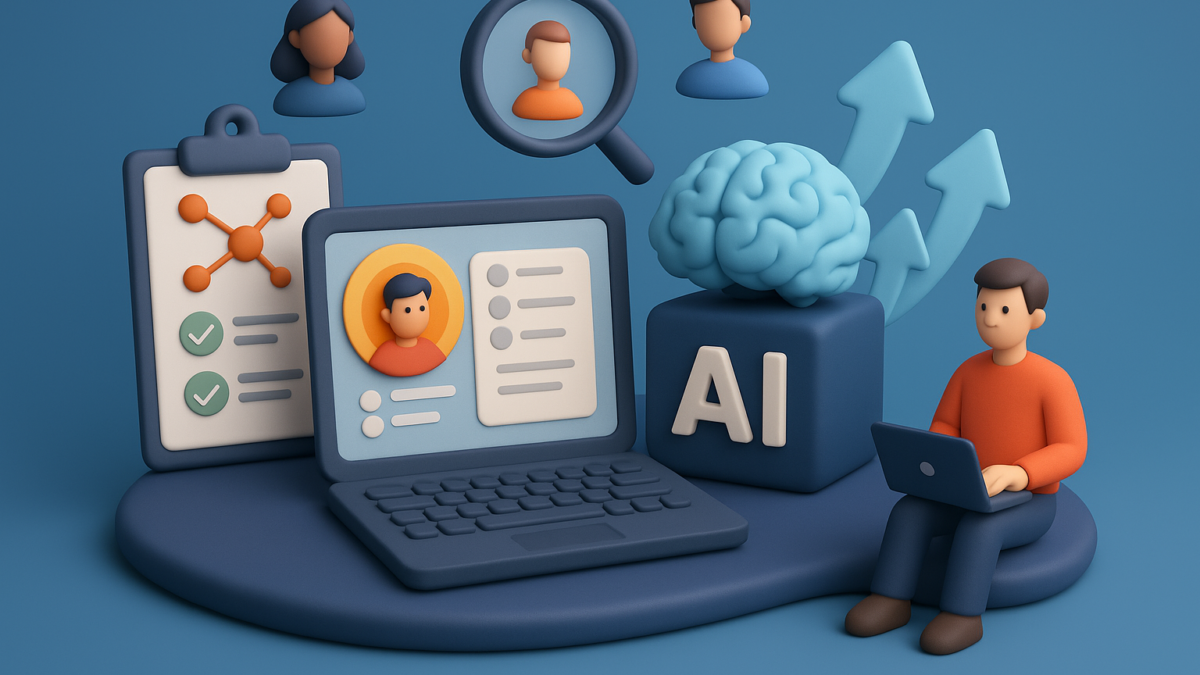Predictive Prospecting: How AI Will Eliminate Guesswork in B2B Lead Gen
Introduction: The End of Cold Guesswork
Traditional prospecting in B2B has always been a numbers game. Sales and marketing teams would cast wide nets, hoping a small fraction of leads would convert. The result? Wasted time, high costs, and frustrated teams.
In 2025, that’s changing. Predictive prospecting powered by AI is taking the guesswork out of lead generation. By analyzing intent signals, behavior patterns, and historical data, AI helps businesses focus only on the most promising prospects—turning lead gen from a gamble into a science.
What Is Predictive Prospecting?
Predictive prospecting uses artificial intelligence and machine learning to:
- Analyze massive datasets (firmographic, technographic, behavioral).
- Score and prioritize leads based on likelihood to convert.
- Identify new opportunities by spotting lookalike accounts.
Instead of working with generic contact lists, teams get data-backed, high-accuracy predictions of who is most likely to buy.
It’s not about doing more prospecting—it’s about doing smarter prospecting.
Why Traditional Prospecting Falls Short
- Data Overload – Sales teams drown in unqualified leads.
- Low Conversion Rates – Cold outreach rarely resonates.
- Inefficient Targeting – Generic campaigns miss true buyer intent.
- Delayed Insights – Manual lead scoring can’t keep pace with buyer behavior.
In today’s attention economy, businesses can’t afford to guess—they need precision targeting.
How AI Is Eliminating Guesswork in B2B Lead Gen
1. Intent Data Analysis
AI tools track buyer signals such as:
- Website visits.
- Keyword searches.
- Content downloads.
- Competitor comparisons.
This helps marketers identify who is actively in the buying cycle right now.
2. Predictive Lead Scoring
Instead of relying on manual scoring models, AI assigns real-time scores based on:
- Historical conversion data.
- Firmographic fit (industry, company size).
- Behavioral engagement.
This ensures sales teams focus on the highest-probability leads first.
3. Lookalike Modeling
AI can identify similar accounts to your best customers by analyzing thousands of attributes.
- Example: If your top clients are SaaS firms with 200–500 employees using AWS, AI finds similar prospects globally.
This expands your pipeline with high-quality, relevant leads.
4. Automated Outreach Triggers
AI-powered systems can notify sales reps when:
- A target account visits your pricing page.
- A prospect reads three blogs on a specific pain point.
- A competitor’s customer shows churn signals.
This ensures outreach happens at the perfect time, not too early or too late.
5. Enhanced Personalization
AI generates tailored messaging based on:
- Buyer persona.
- Industry pain points.
- Stage in the funnel.
This level of personalization leads to higher engagement and response rates.
Real-World Example: Salesforce & 6sense
- Salesforce Einstein uses AI to recommend the next best lead for reps to contact.
- 6sense combines intent data and predictive AI to build dynamic account lists and trigger outreach at the right moment.
Companies using predictive prospecting report up to 40% higher conversion rates compared to traditional outreach.
Benefits of Predictive Prospecting in B2B
- Eliminates Guesswork – Focus only on leads most likely to buy.
- Increases Efficiency – Sales teams spend more time closing, less time chasing.
- Boosts Conversion Rates – Prioritized outreach yields stronger ROI.
- Shortens Sales Cycles – Engage buyers when they’re ready, not months before.
- Scales Easily – AI can process millions of data points beyond human capacity.
Step-by-Step: How to Implement Predictive Prospecting
- Audit Your Data
- Consolidate CRM, website analytics, and marketing automation data.
- Adopt AI-Powered Tools
- Platforms like 6sense, Demandbase, Apollo, or ZoomInfo for predictive insights.
- Align Sales & Marketing
- Ensure both teams agree on lead scoring and outreach triggers.
- Personalize Campaigns
- Use AI insights to craft messaging tailored to pain points.
- Measure & Optimize
- Track conversion rates, engagement, and pipeline growth.
- Refine algorithms based on real-world results.
When Should B2B Marketers Invest in Predictive Prospecting?
Predictive prospecting is especially valuable if you:
- Target enterprise accounts with long buying cycles.
- Struggle with low lead-to-opportunity conversion rates.
- Have large datasets but limited insights.
- Want to scale ABM campaigns with precision.
Related: Explore our B2B Lead Generation Services to integrate predictive strategies into your campaigns.
Challenges & Considerations
While powerful, predictive prospecting comes with challenges:
- Data Quality – AI is only as good as the data it learns from.
- Change Management – Sales teams may resist replacing intuition with AI.
- Costs – Advanced AI platforms require upfront investment.
However, the long-term ROI often outweighs these hurdles, especially as competition for buyer attention intensifies.
The Future of Predictive Prospecting
By 2030, AI-driven predictive prospecting will become standard in B2B. Instead of cold calling 100 prospects, reps may only need to call 10—because AI will have already identified the ones ready to buy.
The shift isn’t just about efficiency; it’s about building smarter, trust-based engagement that respects buyers’ time and attention.
Final Thoughts
The days of guesswork in B2B lead generation are numbered. Predictive prospecting powered by AI allows marketers to replace volume with precision, driving better results with fewer wasted resources.
In a world where attention is scarce, the ability to reach the right prospect at the right time with the right message is what separates market leaders from laggards.
Call-to-Action (CTA)
Want to integrate AI-powered predictive prospecting into your B2B strategy?
For more on modern strategies, explore Whitepaper Lead Generation and see how thought leadership fuels smarter outreach.





